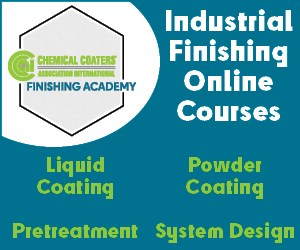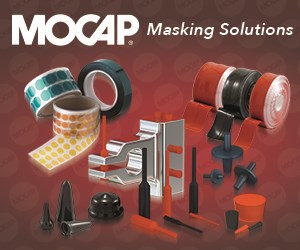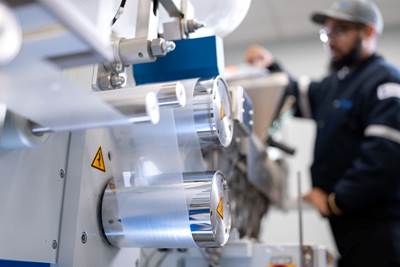Through the Roof
Those of us who drive a vehicle with an internal combustion engine (essentially all of us, at least in the United States) are pretty much used to paying whatever the current price is for gasoline.
Those of us who drive a vehicle with an internal combustion engine (essentially all of us, at least in the United States) are pretty much used to paying whatever the current price is for gasoline. If you need a commodity, like gasoline, what choice do you have?
Plating companies face a similar situation when it comes to the metals they plate. And if you’re in the plating business, what you’re about to read is not going to be news: chances are that you’ve noticed a significant spike in the price of metals over the last year.
It really doesn’t matter much what you plate. Across the board, for metals base and precious, prices are sky high from a historical perspective and compared with the beginning of last year. Nickel prices, for example, increased 60% in 2006. Copper jumped 83%, while zinc increased 134%, hitting an all-time high of $2.09/lb in December trading on the London Metals Exchange. Aluminum prices skyrocketed 125%.
These drastic price increases have had some unexpected and bizarre results. Around the U.S., potentially Darwin-award-winning thieves are taking their lives in their hands by stealing copper electrical wire—while it’s connected. In Tennessee, for example, someone cut through the wire fence surrounding an electrical substation, then used bolt cutters to steal approximately 700 pounds of ground copper wire.
In that case the thieves were lucky—local authorities reported that some of the wires carried more than 160,000 volts of electricity—but other would-be thieves weren’t so lucky. At least seven men in five states have been fatally electrocuted since July while hacking through power lines to steal copper wire.
High metals prices have also prompted the U.S. government to remind us all that melting coinage for profit is a crime. Near the end of 2006, the value of the metal in a nickel reached 6.99¢, while the metal in a penny was worth 1.12¢, according to the U.S. Mint. Since 1982, the composition of the U.S. penny has been about 97.5% zinc and 2.5% copper.
Under the new rules, it’s illegal to melt pennies and nickels or to export the coins for melting. Violators could spend up to five years in prison and pay as much as $10,000 in fines. Plus, the government will confiscate any coins or metal used in melting schemes.
Reasons for the spike in metals prices are many and varied. Increasing global demand, led by China, is certainly a factor. The country already consumes one-fifth of total global supplies of copper and zinc, nearly 30% of steel, and 40% of iron ore, according to one industry analyst.
Strong demand for nickel is driven largely by its prominent role in stainless steel, which is said to absorb about 65% of global nickel supplies. And speculators, perhaps bored of the stock market or simply sensing an opportunity to reap some profits, played a role in across-the-board metals price increases.
The good news is, 2007 should be better, with prices expected to remain flat or even decrease slightly for some metals. Global demand for many metals is expected to level off, and analysts say mining companies are planning to spend more than $7 billion for exploration in a rush to locate more metal resources. New mines coming online this year are expected to meet increased global demand for copper, aluminum and zinc.
If you plate nickel, an expected 6.5% increase in mine supply of nickel early this year may loosen the tight producer control of nickel pricing and reduce the market price by maybe 10%, according to analysts.
The exception here is zinc; prices are expected to remain at historic highs near $2/lb. One analyst even predicts that zinc supplies will reach critical lows of only a couple days’ consumption before mid-year.
The question is, what can you do besides just pay up? One option may be metals recycling. Historically used mainly by platers of precious metals, recycling may now make economic sense for more materials. It’ll reduce your waste disposal costs, too.
If you haven’t done so already, talk with your chemistry supplier about ways to maximize the usage of whatever metal you’re plating, or even about new chemistries that can lower your metals consumption. An example of the latter is low-metal operation electroless nickel, which is described in our article in this issue.
And hang on. Metals prices this year may not rise as much as they did in 2006. Then again, they’re already starting out from historic highs, so they don’t have to.
Related Content
Precise Paint Flow Reduces Material and Labor Costs
Finding a more accurate paint proportioner for its application enabled this auto parts manufacturer to save significant costs and labor while increasing capacity.
Read MoreThe 2024 Ford Mustang: All the Colors Available
Although Chevrolet has announced the end of the Camaro and Dodge is offering “Last Call” editions of the Charger and Challenger, the Ford Mustang is launching to its seventh generation.
Read MoreTitrations: To Automate or Not to Automate?
What considerations should you keep in mind for automatic titrations? Conor McAnespie of Hanna Instruments discusses the benefits of auto titrators.
Read MoreRead Next
A ‘Clean’ Agenda Offers Unique Presentations in Chicago
The 2024 Parts Cleaning Conference, co-located with the International Manufacturing Technology Show, includes presentations by several speakers who are new to the conference and topics that have not been covered in past editions of this event.
Read MoreEducation Bringing Cleaning to Machining
Debuting new speakers and cleaning technology content during this half-day workshop co-located with IMTS 2024.
Read MoreDelivering Increased Benefits to Greenhouse Films
Baystar's Borstar technology is helping customers deliver better, more reliable production methods to greenhouse agriculture.
Read More














.jpg;maxWidth=300;quality=90)







